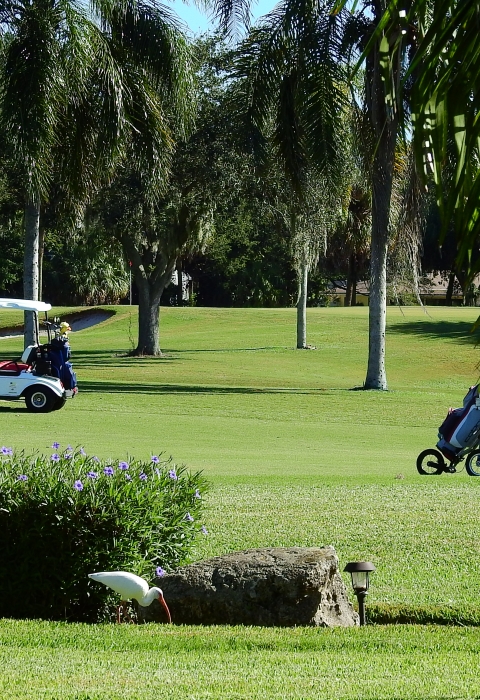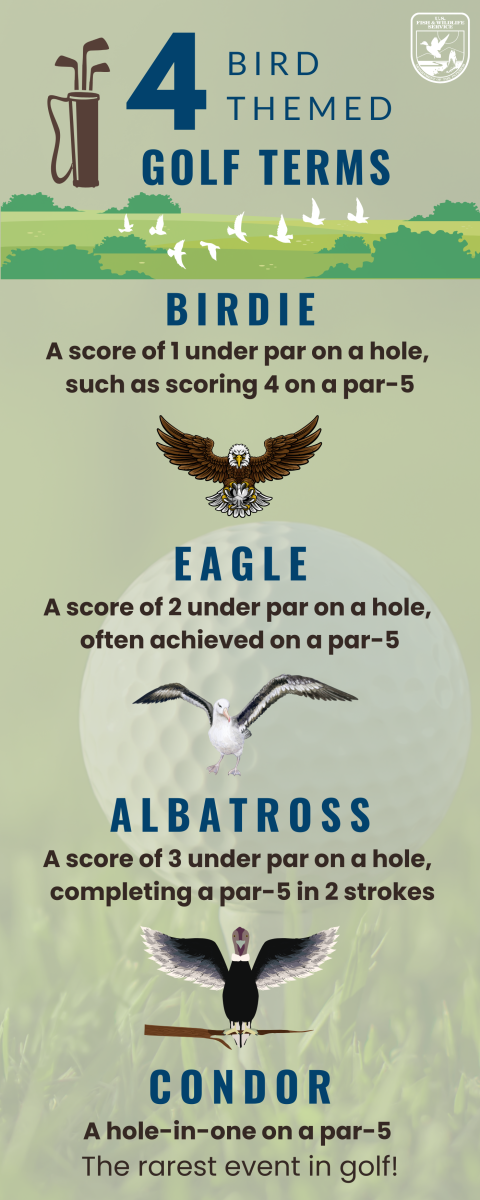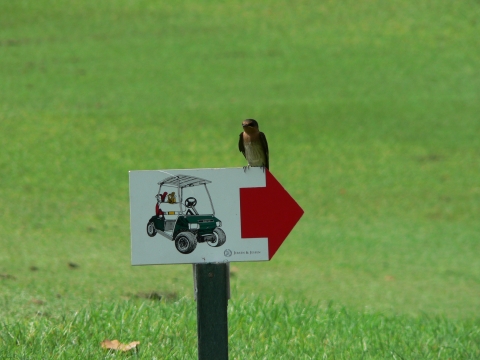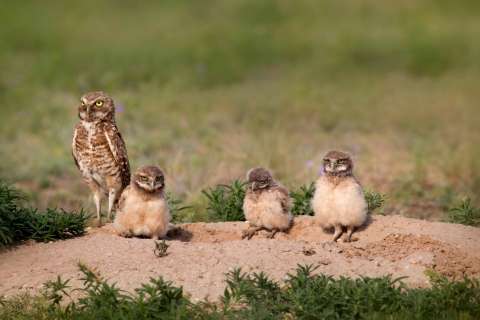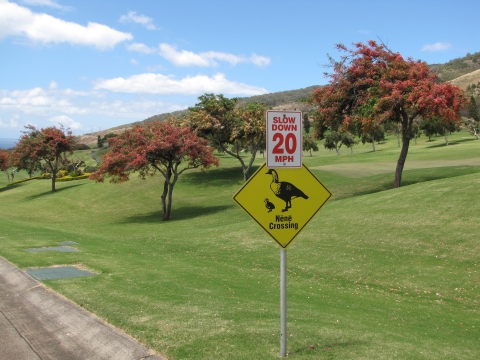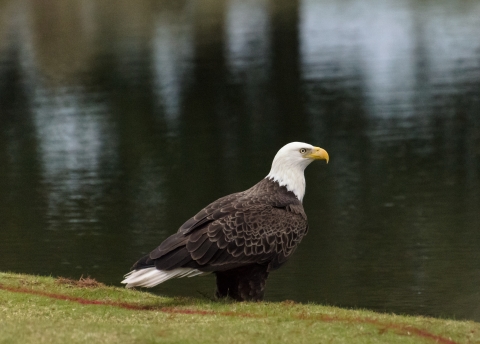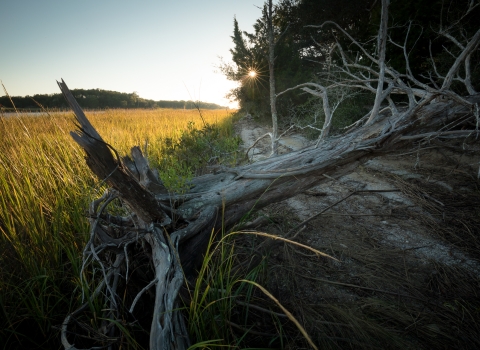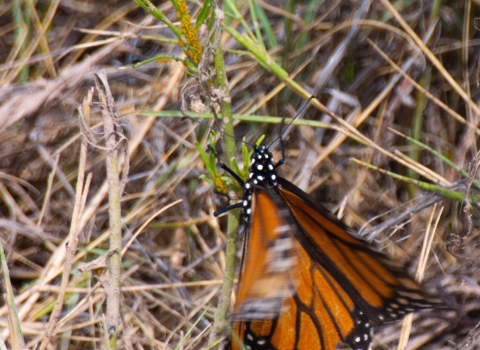The golf industry is getting greener and improving its environmental game with bird-friendly best practices. A growing number of clubs have converted out of play rough into protected areas where little to no maintenance occurs and wildlife are free to live undisturbed. Others are taking on new projects to create additional habitat and welcome even more wildlife. New clubs are choosing designs that preserve as much native habitat as possible, embracing the win-win opportunities that come with supporting biodiversity. By providing valuable habitat and supporting conservation initiatives, golf courses have the potential to serve as a sanctuary for golfers to enjoy both the sport and nature in action.
Birdies Par for the Course
Birds and the sport of golf have more in common than you might think! Not only does golfs lexicon feature bird-themed terms, but both recreational golf and birding are becoming more popular. According to the National Golf Foundation, more than one-third of the US population over the age of five played golf in 2023, a 30% increase from 2016. Similarly, our latest Survey of Fishing, Hunting, and Wildlife-Associated Recreation survey showed that more than 96 million people in the U.S. regularly observe, feed, or photograph birds, which is more than 35% of the population aged 16 and older. This is also a significant increase from the 2016 estimate of 45.1 million birdwatchers, which was about 20% of the population. Both birding and golfing can be good ways to slow down, decompress, and practice mindfulness in nature, especially at the same time!
Fairways furnished with a mix of grasses, flowering plants, trees and shrubbery can attract birds and beneficial insects like pollinators. They can serve as important feeding grounds for a variety of insect, plant and seed eating bird species. Grassland birds like meadowlarks and sparrows may search for insects among the foliage while aerial insectivores like American kestrels, swifts, and swallows may help with pest control while in flight. Water features and wetlands attract wading bird species like wood storks and ibis while trees and shrubs provide shade and shelter for forest birds. By providing sources of food, water, and shelter, golf courses can naturally support many of birds most basic needs, making achieving "birdies" a practical and enjoyable part of the golfing experience.
From Flyways to Fairways
Each spring and fall, billions of migratory birds travel between their breeding and non-breeding grounds, relying on "stopover sites" to rest and refuel along the way. These journeys are risky for birds, not only because of collision hazards, vulnerability to predators and weather conditions, but also because of the increasing threat of habitat loss and fragmentation along their flyways.
Habitat impacts are considered the largest individual threat to migratory birds. Quality habitat is extremely important during the breeding season when birds rely on nearby resources to raise healthy young and require safe spots to nest in plants or on the ground. If that habitat is destroyed or disturbed during the breeding season, nests may be lost or abandoned. Such loss and degradation of quality bird habitat can lead to population declines on local and national scales.
In the face of both a rapidly changing climate and habitat loss, many birds are seeking refuge among the vegetation and bare zones of golf courses. This means golf courses have the potential to play a crucial role as stepping-stones across fragmented landscapes by welcoming birds across their flyways and enhancing habitat connectivity on a landscape scale. For the golfing birder, this can also be a welcomed opportunity to enjoy observing new or exciting species!
Albatross in the Rough
Speaking of exciting species... In golf, an “albatross” is considered one of the rarest and most impressive achievements in the game. Coincidentally, albatross are also part of the rarest and most impressive groups of birds in the world: seabirds. Albatross are known for their impressive wingspans and long-distance flights across oceans, soaring for thousands of miles on oceanic winds. Their grace and endurance are qualities most golfers strive for.
Like other seabirds, albatross spend most of their lives at sea, only returning to land when its time to breed, nest, and raise their young on coastal lands. Out of the 22 species of albatross, only 3 migrate to the U.S., specifically the Hawaiian Islands, each year: Laysan albatross (mōlī), black-footed albatross (ka‘upu), and the federally endangered short-tailed albatross (makalena). Both the Laysan albatross and black-footed albatross can be found nesting on golf courses along the island coasts with numerous other seabirds and terrestrial birds.
On Kauai, Laysan albatross can be seen nesting in large groups across both Kilauea Point National Wildlife Refuge and the nearby Princeville Makai Golf Club. Hawaii’s state bird, the Hawaiian goose (nēnē) is another regular visitor of the golf course, which is now home to more than 20% of the entire population! Guests to the golf club also frequently report seeing the Hawaiian gallinule (`alae `ula) around the third hole, as well as endangered Hawaiian duck (koloa maoli), and endangered Hawaiian stilt (aeʻo), around the serene freshwater lakes. The Princeville Makai Golf Club takes special care to block off areas where these birds are found to protect them and reduce disturbance as they raise their young.
On Oahu, the City and County of Honolulu manages around 114 acres of coastal lands along the North Shore, including the Kahuku Golf Course next to James Campbell National Wildlife Refuge (NWR). James Campbell NWR was established in 1976 to conserve habitat for endangered birds and some of the islands last remaining natural wetlands. Local residents, golfers, and visitors have played a large role in efforts to protect and restore bird habitats in these areas and demonstrate the power of community involvement!
At bird-friendly golf courses, golfers can celebrate their birdies and strive for the elusive albatross while taking pride in knowing that their sport contributes to bird conservation. At the same time, there is growing recognition that bird habitat can also play a key role in climate resilience by sequestering carbon in the grounds, mitigating against floods, and making our air cleaner. Habitat conservation actions like protecting grasslands, planting native trees and restoring wetlands are proving to strengthen our communities while building more beautiful and balanced environments for all. By supporting bird-friendly initiatives, the golf industry can make a positive impact far beyond the greens.
When birds thrive, we all win.
Creating a Bird-Friendly Golf Course
Creating a bird-friendly golf course not only enhances the natural beauty of the landscape but also promotes biodiversity and ecological balance.
Here are some effective strategies to make your golf course a sanctuary for birds:
Native Plant Landscaping
Incorporate native trees, shrubs and flowers to provide natural food sources and nesting habitats for birds and other wildlife. You can use this Native Plant Finder to see what plants are native to your area!
Use native grasses as ground covers and turfgrass alternatives.
Establish a variety of habitats such as woodlands, wetlands, and meadows to attract different bird species.
Water Features
Create or maintain natural streams, ponds and other wetlands for birds to drink and bath.
Ensure the edges of water features are shallow to allow easy access for birds.
Minimize Chemical Use
Limit the use of pesticides and chemicals that can harm birds and their food sources.
Integrated Pest Management (IPM): Implement IPM practices that focus on natural pest control methods.
Bird Boxes and Nesting Sites
Provide and maintain bird boxes for species such as bluebirds, purple martins and swallows.
Protect existing trees and shrubs that serve as natural nesting sites.
Safe Haven from Predators
Create dense vegetation and brush piles where birds can hide from predators near more wooded areas.
Limit the presence of feral and free-roaming cats, which pose a significant threat to bird populations as a non-native predator species.
Educational Signage
Install signs that educate golfers about the bird-friendly practices in place and encourage them to respect bird habitats.
Designate specific areas for bird watching, providing information about the local bird species and occasional migratory visitors.
Monitoring and Conservation Programs
Conduct regular bird surveys to monitor the bird populations and biodiversity on the golf course.
Work with local wildlife organizations and conservationists to develop and maintain bird-friendly practices.
Maintenance Practices
Schedule maintenance activities like mowing and trimming during times that minimize disturbance to nesting birds.
Choose sustainable water practices like precision irrigation, water recycling and drought-resistant grass varieties.
Where safe, leave dead trees standing as they provide habitats for numerous species.
Community Involvement
Engage the local community and golfers in volunteer programs to help with bird-friendly initiatives.
Host workshops and events to educate the community about the importance of bird conservation.
Implementing these strategies can transform a golf course into a vibrant, bird-friendly environment, enriching the experience for golfers and contributing positively to the local ecosystem.
By providing wildlife access to food, water and shelter, golf courses can be excellent refuges for many species. However, providing optimum habitat requires forethought and commitment. Need help? Consult with environmental experts familiar with local plants and animals. Include a wildlife biologist or environmental agency on your planning team and ask about programs that offer incentives to partners making special considerations to protect endangered species.
More Resources
The United States Golf Association (USGA) Green Section provides information on every phase of golf course maintenance and management, from investigating and improving course greens to promoting environmentally sensitive construction.
Golf Course Superintendents Association of America (GCSAA) honors environmentally progressive golf course managers with annual awards, while the GCSAA’s Environmental Institute for Golf helps course managers sharpen their environmental game through best practices and information, including the EDGE, an online resource portal stocked with the latest and greatest intelligence on water management, integrated pest management, wildlife conservation, golf course design and construction, and energy/waste management.
Threats to Birds: Habitat Impacts
Threats to Birds: Nighttime Lighting
Center for Pollinator Conservation
